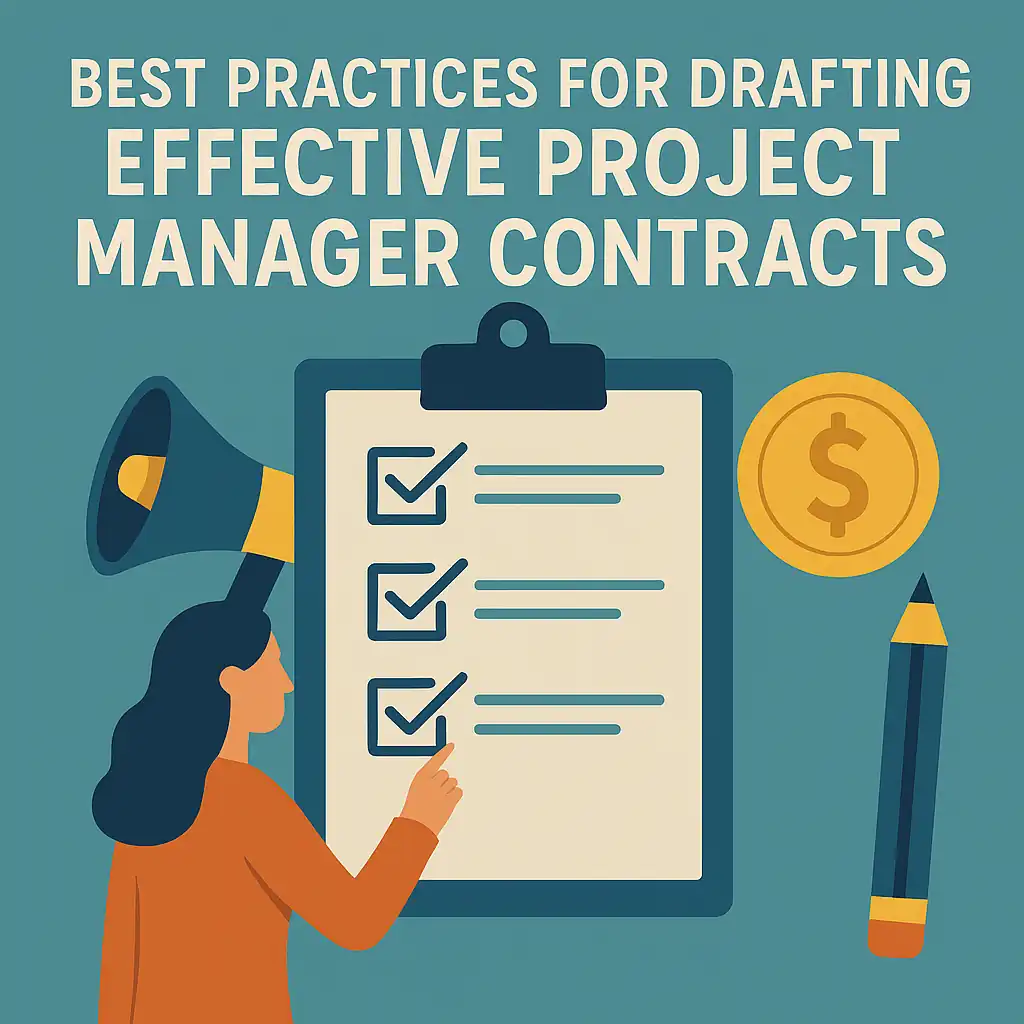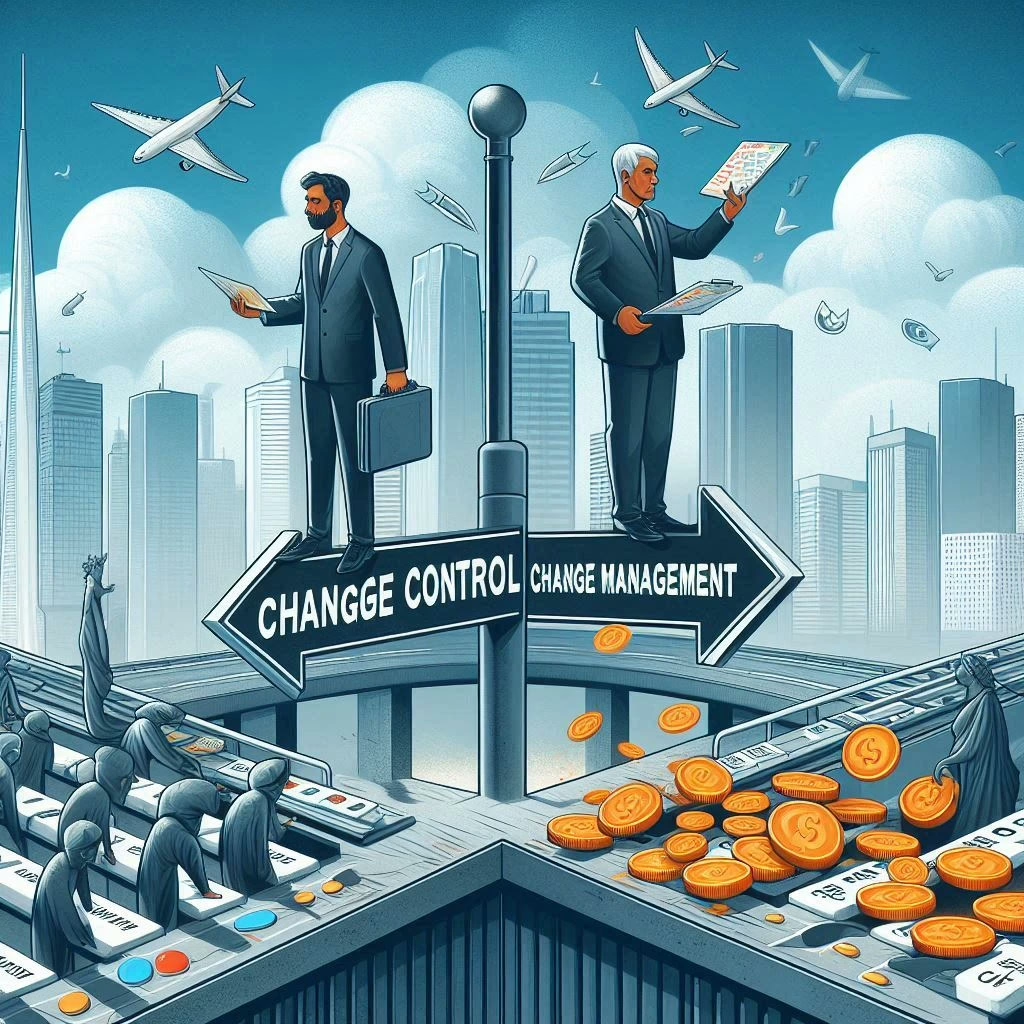Introduction
Project managers are responsible for planning, executing, and closing projects, ensuring that they meet the defined objectives within the constraints of time, budget, and quality. Given the complexity and multifaceted nature of projects, well-drafted contracts become essential tools that not only outline the expectations and responsibilities of all parties involved but also serve as a safeguard against potential disputes.
A solid contract can significantly impact project success by providing a clear framework for collaboration and accountability. It establishes the scope of work, delineates roles and responsibilities, and sets forth the terms and conditions that govern the project. This clarity helps to foster positive relationships among stakeholders, including clients, contractors, and team members, by minimizing misunderstandings and aligning expectations from the outset. Effective contract management is vital for maintaining project momentum and ensuring that all parties are on the same page throughout the project lifecycle [1][9].
In this article, we will explore best practices for drafting effective project manager contracts. We will cover practical tips that contract managers and project managers can implement to create contracts that protect both parties. Key topics will include the importance of clear communication, the necessity of defining the scope of services accurately, and the value of regular contract reviews and updates. By following these guidelines, project managers can enhance their contract management processes, ultimately leading to more successful project outcomes and stronger stakeholder relationships.
Understanding the Basics of a Project Manager Contract
A well-structured contract is essential for defining the relationship between the project manager and the client. This section will provide foundational knowledge about project manager contracts, focusing on their definition, key components, and the legal terminology that impacts both parties.
Definition and Purpose of a Project Manager Contract
A project manager contract is a legally binding agreement that outlines the terms and conditions under which a project manager will operate. Its primary purpose is to establish clear expectations and responsibilities for both the project manager and the client, ensuring that all parties are aligned on the project’s objectives, scope, and deliverables. This contract serves to protect the interests of both parties by providing a framework for accountability and performance measurement.
Key Components Typically Included in These Contracts
When drafting a project manager contract, several key components should be included to ensure clarity and comprehensiveness:
- Scope of Work: This section details the specific tasks and responsibilities of the project manager, including project milestones and deliverables. Clearly defining the scope helps prevent misunderstandings and scope creep.
- Timeline: A well-defined timeline outlines the project schedule, including start and end dates, as well as key milestones. This helps both parties manage expectations regarding project duration.
- Compensation: This component specifies the payment structure, including rates, payment schedules, and any additional expenses that may be reimbursed. Clear compensation terms help avoid disputes over payment.
- Termination Clause: This clause outlines the conditions under which either party can terminate the contract. It is crucial for protecting both parties in case the project does not proceed as planned.
- Confidentiality and Non-Disclosure Agreements: These provisions protect sensitive information shared during the project, ensuring that proprietary data remains confidential.
- Dispute Resolution: This section outlines the process for resolving conflicts that may arise during the project, which can include mediation or arbitration procedures.
Legal Terminology and Its Implications for Both Parties
Understanding legal terminology is vital for both project managers and clients to navigate contracts effectively. Key terms include:
- Indemnification: This refers to the obligation of one party to compensate the other for certain damages or losses. It is essential for defining liability and protecting against potential claims.
- Force Majeure: This clause addresses unforeseen events that may prevent either party from fulfilling their contractual obligations, such as natural disasters or other emergencies. Understanding this term helps both parties prepare for unexpected disruptions.
- Breach of Contract: This occurs when one party fails to meet their contractual obligations. Knowing the implications of a breach is crucial for both parties to understand their rights and potential remedies.
Identifying Key Stakeholders and Their Roles
Drafting an effective contract for a project manager is crucial for ensuring that all parties involved are aligned and protected. Recognizing and defining the roles of key stakeholders is a fundamental step in this process. Here are some best practices to consider:
List of Potential Stakeholders
- Clients: The primary party who commissions the project and has the ultimate authority over project decisions and budget.
- Project Teams: This includes the project manager, team members, and any internal resources who will execute the project tasks.
- Subcontractors: External parties hired to perform specific tasks or services that are part of the project.
- Suppliers: Vendors providing materials or services necessary for project completion.
- Regulatory Bodies: Entities that ensure compliance with laws and regulations relevant to the project.
- End Users: Individuals or groups who will ultimately use the project deliverables.
The Role of Each Stakeholder in the Contract
- Clients: They define project objectives, approve budgets, and set timelines. Their expectations must be clearly articulated in the contract to avoid misunderstandings.
- Project Teams: Responsible for executing the project plan, their roles should be detailed in the contract, including responsibilities, deliverables, and performance metrics.
- Subcontractors: Their specific tasks, timelines, and payment terms should be outlined to ensure accountability and quality of work.
- Suppliers: Contracts should specify the terms of supply, including delivery schedules and quality standards.
- Regulatory Bodies: The contract should include clauses that address compliance with relevant regulations, ensuring that all stakeholders are aware of their obligations.
- End Users: While they may not be directly involved in the contract, their needs and feedback should be considered to ensure the project meets its intended purpose.
Facilitating Communication and Expectations Among Stakeholders
- Regular Meetings: Schedule consistent check-ins with all stakeholders to discuss progress, address concerns, and adjust expectations as necessary.
- Clear Documentation: Maintain comprehensive records of all communications and decisions made throughout the project lifecycle. This helps in managing expectations and provides a reference point for all parties.
- Defined Communication Channels: Establish specific channels for communication (e.g., email, project management tools) to ensure that all stakeholders can easily share information and updates.
- Expectation Management: Clearly outline what each stakeholder can expect in terms of deliverables, timelines, and responsibilities. This can be reinforced through the contract and regular updates.
By identifying key stakeholders and clearly defining their roles within the project manager contract, you can create a framework that not only protects the interests of all parties involved but also enhances collaboration and project success. This proactive approach to stakeholder management is essential for navigating the complexities of project execution and ensuring that everyone is on the same page.
Defining Scope, Deliverables, and Timeline
In project management, the clarity of the project scope, deliverables, and timeline is crucial for the success of any contract. Here are some practical tips to ensure that both parties are protected and aligned throughout the project lifecycle.
- Articulating Project Goals and Objectives Clearly: It is essential to start by defining the project’s goals in a clear and concise manner. This involves drafting a project scope statement that outlines the objectives, deliverables, and boundaries of the project. A well-defined scope helps prevent scope creep and ensures that all stakeholders have a shared understanding of what the project aims to achieve [8][10]. Utilizing a work breakdown structure can also aid in identifying specific tasks and activities that align with the project goals [3].
- Importance of Defining Deliverables and Acceptance Criteria: Clearly defining deliverables is vital for setting expectations. Each deliverable should be described in detail, including its specifications and the criteria for acceptance. This not only helps in measuring progress but also ensures that both parties agree on what constitutes a successful outcome. Including penalties for missed deadlines or subpar deliverables can further protect both parties by establishing accountability [1][6].
- Strategies for Establishing Realistic Timelines and Milestones: Establishing a realistic timeline is critical for project success. This can be achieved by creating a deliverables timeline that outlines key milestones and deadlines. Utilizing tools like Gantt charts can provide a visual representation of the project phases, making it easier to track progress and adjust timelines as necessary [4][9]. It is also important to set clear priorities and ensure that all parties agree on the timeline to avoid misunderstandings later on [7].
By focusing on these key areas—articulating goals, defining deliverables, and establishing timelines—contract managers and project managers can create effective contracts that protect both parties and set the stage for successful project execution.
Establishing Roles, Responsibilities, and Authority
When drafting a project manager contract, it is crucial to clearly define the roles and responsibilities of the project manager as well as those of other team members and stakeholders. This clarity not only protects both parties but also enhances project efficiency and accountability. Here are some best practices to consider:
- Defining the Project Manager’s Responsibilities and Authority: It is essential to outline the specific responsibilities of the project manager in writing. This includes their authority over personnel, equipment, and materials, as well as their role in setting project goals and ensuring they are met. A well-defined scope of authority helps prevent misunderstandings and sets clear expectations for performance and accountability [3][4].
- Specifying the Roles of Other Team Members and Stakeholders: In addition to the project manager, the contract should detail the roles and responsibilities of other team members and stakeholders. This includes identifying core functions and clarifying expectations for each role. By doing so, all parties involved will have a clear understanding of their contributions to the project, which can lead to improved collaboration and reduced conflict [2][10].
- Addressing Decision-Making Processes and Escalation Procedures: It is important to establish clear decision-making processes within the contract. This includes defining who has the authority to make decisions at various stages of the project and outlining the escalation procedures for resolving conflicts or issues that may arise. By specifying these processes, the contract can help streamline communication and ensure that decisions are made efficiently, thereby minimizing delays and enhancing project outcomes [7][8].
By implementing these best practices, contract managers and project managers can create effective contracts that not only protect the interests of both parties but also contribute to the overall success of the project. Clear roles, responsibilities, and authority are foundational elements that facilitate smooth project execution and foster a collaborative working environment.
Incorporating Payment Terms and Conditions
When drafting contracts for project managers, it is essential to clearly outline the payment terms and conditions to ensure that both parties are protected and understand their obligations. Here are some practical tips to consider:
Different Payment Structures
- Fixed Price: This structure involves a set fee for the entire project, which can be beneficial for both parties as it provides clarity on costs upfront. However, it requires a well-defined scope of work to avoid disputes over additional costs that may arise during the project [6].
- Hourly Rate: Charging by the hour can be advantageous for projects where the scope is uncertain or likely to change. This method allows for flexibility but requires careful tracking of hours worked to ensure accurate billing [10].
- Milestones: Payments can be tied to specific project milestones, which helps in managing cash flow and ensures that the project is progressing as planned. This structure encourages accountability and can motivate timely completion of project phases [8].
Conditions for Payments and Invoicing Procedures
- Clear Invoicing Guidelines: Establishing a clear invoicing procedure is crucial. This includes specifying when invoices should be submitted, the required documentation, and the format for invoices. This clarity helps prevent delays in payment and ensures that both parties are aligned on expectations [9].
- Payment Schedule: A detailed payment schedule should be included in the contract, outlining when payments will be made (e.g., upon completion of milestones, monthly, etc.). This schedule should also specify any conditions that must be met before payments are released [8].
Consequences of Late Payments and Non-Compliance
- Late Payment Penalties: It is important to define the consequences of late payments in the contract. This could include interest charges on overdue amounts or a grace period before penalties apply. Clearly stating these terms can encourage timely payments and protect the project manager’s financial interests [1].
- Non-Compliance Clauses: The contract should also outline the steps that will be taken in the event of non-compliance with payment terms. This may include the right to suspend work until payment is received or the ability to terminate the contract if payments are consistently late. Such clauses help to safeguard the project manager’s position and ensure that both parties adhere to the agreed-upon terms [2].
By incorporating these elements into project manager contracts, contract managers can create agreements that not only protect their interests but also foster a positive working relationship between all parties involved.
Risk Management and Dispute Resolution
Effective contract drafting is crucial for safeguarding the interests of both project managers and clients. A well-structured contract not only delineates responsibilities but also addresses potential risks and outlines mechanisms for dispute resolution. Here are some practical tips for managing risks and resolving disputes in project manager contracts.
Identifying Potential Risks in Project Management
Understanding the landscape of potential risks is the first step in effective contract management. Common risks in project management include:
- Scope Creep: Uncontrolled changes or continuous growth in a project’s scope can lead to budget overruns and missed deadlines.
- Resource Availability: Fluctuations in resource availability can impact project timelines and deliverables.
- Regulatory Compliance: Failing to adhere to industry-specific regulations can result in legal penalties and project delays.
- Stakeholder Conflicts: Misalignment among stakeholders can lead to disputes and hinder project progress.
By identifying these risks early, contract managers can incorporate specific clauses that address them, thereby minimizing their impact on the project.
Strategies for Risk Mitigation and Management within the Contract
To effectively manage risks, consider the following strategies when drafting contracts:
- Clear Scope Definition: Clearly outline the project scope, deliverables, and timelines to prevent scope creep. This should include detailed descriptions of tasks and responsibilities for all parties involved.
- Change Management Procedures: Establish a formal process for managing changes to the project scope. This should include how changes are proposed, assessed, and approved, ensuring that all parties agree before any modifications are made.
- Performance Metrics: Include specific performance metrics and milestones in the contract. This allows for regular assessment of progress and helps identify potential issues early on.
- Insurance and Liability Clauses: Incorporate clauses that address liability and insurance requirements. This protects both parties in the event of unforeseen circumstances that could lead to financial loss.
Dispute Resolution Mechanisms: Mediation, Arbitration, Litigation
Despite best efforts, disputes may still arise during the course of a project. It is essential to have clear dispute resolution mechanisms in place:
- Mediation: This is a collaborative approach where a neutral third party helps facilitate a resolution between the disputing parties. Mediation is often less formal and can preserve relationships, making it a preferred first step in dispute resolution.
- Arbitration: In arbitration, a neutral third party makes a binding decision after hearing both sides. This process is typically faster and less expensive than litigation, making it an attractive option for many contracts.
- Litigation: As a last resort, disputes may be resolved through litigation in a court of law. This process can be lengthy and costly, so it is advisable to include clauses that encourage mediation or arbitration before resorting to litigation.
By incorporating these risk management strategies and dispute resolution mechanisms into project manager contracts, contract managers can create a framework that protects both parties and fosters a collaborative working environment. This proactive approach not only mitigates risks but also enhances the likelihood of project success.
Reviewing and Modifying the Contract
The contract between a project manager and the client is a critical document that outlines expectations, responsibilities, and deliverables. To ensure that this contract remains relevant and effective throughout the project lifecycle, it is essential to adopt best practices for reviewing and modifying the contract. Here are some practical tips to help contract managers and project managers navigate this process effectively:
- Importance of Regular Reviews: Regularly reviewing the contract is vital to ensure that it continues to meet the needs of both parties. This practice allows for the identification of any discrepancies or areas that may require clarification as the project evolves. By maintaining a complete narrative of the contract’s history, managers can better understand the context of decisions made and changes implemented over time [1].
- When to Modify the Contract: Modifications to the contract should be considered when there are significant changes in project scope, timelines, or resources. For instance, if unforeseen circumstances arise that impact project deliverables, it is crucial to assess whether the existing contract adequately addresses these changes. Establishing a clear contract lifecycle can help identify the appropriate moments for review and modification [2][4].
- How to Modify the Contract Effectively: When it comes to modifying the contract, clarity and specificity are key. It is important to outline the exact changes being made and the reasons behind them. This can involve drafting an amendment or addendum that details the modifications while ensuring that all critical clauses are still aligned with the original intent of the contract. Striving for clear language and avoiding ambiguous terms will help prevent misunderstandings [8].
- Communicating Changes to Stakeholders: Effective communication is essential when changes are made to the contract. All stakeholders should be informed of the modifications and the rationale behind them. This can be achieved through formal meetings, written notifications, or updates in project management tools. Ensuring that everyone is on the same page helps maintain trust and collaboration among all parties involved [5].
By implementing these best practices for reviewing and modifying project manager contracts, contract managers and project managers can create a more flexible and responsive contractual framework. This approach not only protects the interests of both parties but also enhances the overall success of the project.
Conclusion
Drafting effective project manager contracts is crucial for ensuring that both parties are protected and aligned throughout the project lifecycle. Here are the key takeaways from our discussion on best practices:
- Clarity and Specificity: Contracts should clearly outline the roles, responsibilities, and expectations of both the project manager and the client. This includes defining project scope, deliverables, timelines, and payment terms to avoid misunderstandings and disputes.
- Flexibility and Adaptability: While it’s important to be specific, contracts should also allow for some flexibility to accommodate changes in project scope or unforeseen circumstances. This can help maintain a positive working relationship and ensure project success.
- Risk Management: Incorporating clauses that address potential risks and liabilities can protect both parties. This includes outlining procedures for handling disputes, changes in project scope, and termination conditions.
- Collaboration and Communication: Approaching contract drafting as a collaborative process fosters a sense of partnership between the project manager and the client. Engaging in open discussions about contract terms can lead to a more effective agreement that meets the needs of both parties.
- Regular Review and Updates: Contracts should not be static documents. Regularly reviewing and updating contracts as the project progresses can help address any emerging issues and ensure that the agreement remains relevant.
As you prepare for your next project, we encourage you to implement these best practices in your contract drafting process. By doing so, you can create agreements that not only protect both parties but also lay the foundation for successful project execution. Embrace the collaborative nature of contract management, and watch your projects thrive.
Find out more about Shaun Stoltz https://www.shaunstoltz.com/about/.
This post was written by an AI and reviewed/edited by a human.



